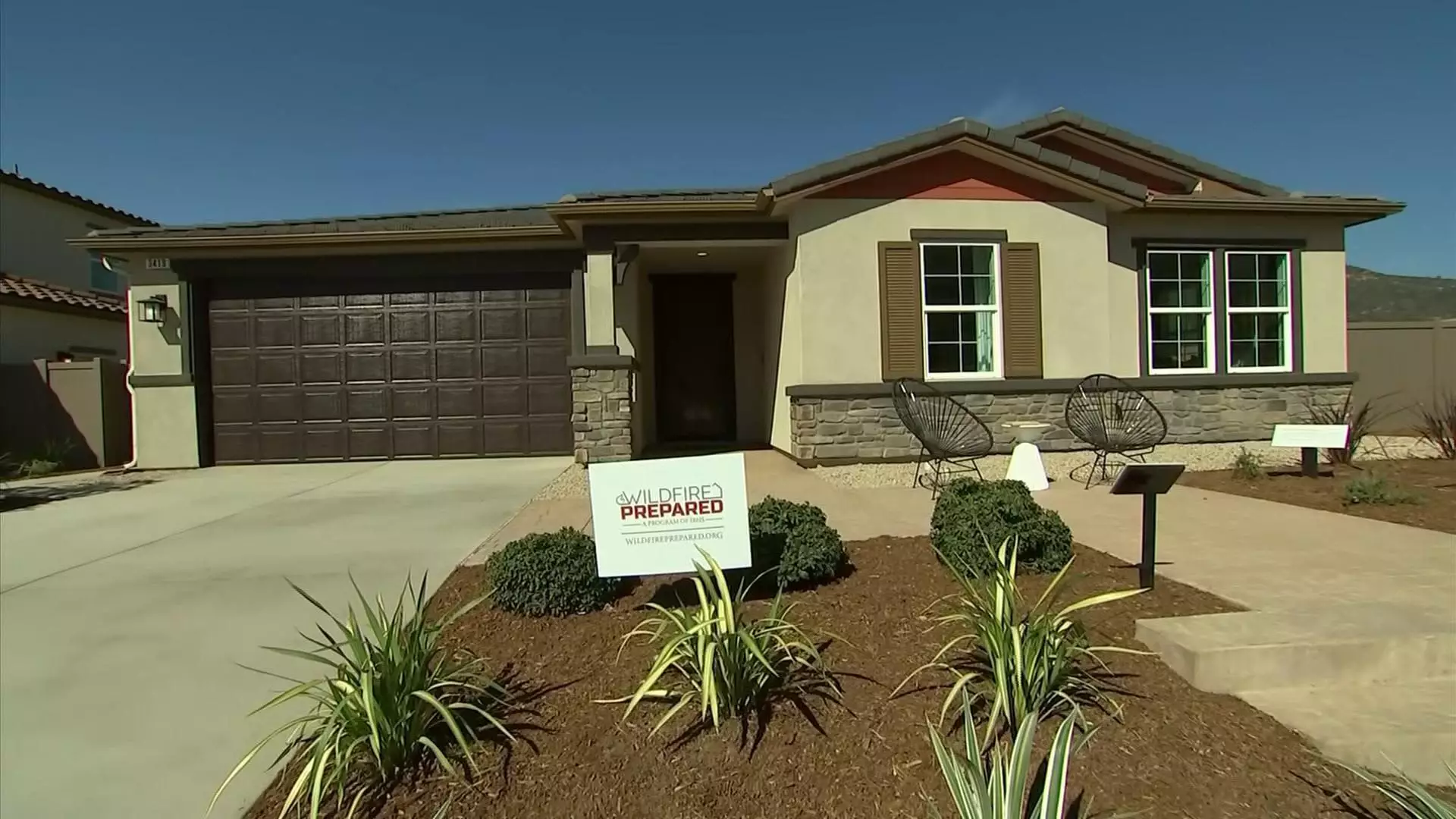In the aftermath of disastrous wildfires that have decimated portions of California, the urgency for innovative solutions has never been more pressing. With homes reduced to ashes and entire neighborhoods transformed into wastelands, the question arises: can we really build our way out of this nightmare? Wildfires are becoming a relentless reality in the Golden State, a stark reminder of a changing climate that is forcing residents to reevaluate their safety measures. Recently, KB Home, a prominent player in the housing market, is making headlines with its ambitious plan to create the first wildfire-resilient community in Escondido, near San Diego—a move that ignites both hope and skepticism.
Innovations or Marketing Gimmicks?
The mere labeling of these homes as “wildfire-resilient” invites scrutiny. While KB Home’s initiative is undoubtedly innovative, we must question whether it is more of a marketing strategy than a genuine solution to a deepening crisis. Built to withstand the three main types of ignition during a wildfire—flying embers, flames, and radiant heat—the homes boast features such as non-combustible siding, tempered-glass windows, and carefully engineered defensible spaces. However, one must ask: how effective can these relatively new designs really be when matched against the ferocity of nature’s wrath?
From what can be gathered, KB Home has adapted its construction on the fly to meet wildfire resilience standards developed by the Insurance Institute for Business & Home Safety (IBHS). Yet, despite the enthusiasm, the community plans to incorporate fire-resistant designs as a learning project rather than a definitive solution. This raises an important question: do we need more pilot projects, or a concrete action plan that can be adopted on a larger scale?
Architecture Under Pressure
The transition from traditional building practices to fire-resistant design seems ambitious, and experts like Steve Ruffner, the regional general manager of KB Home’s coastal division, acknowledge the hurdles. He speaks of quickly shifting to a stucco-oriented architecture with specialized shutters and temperate glass features. While this speed can be commendable, it does lead to concerns about thoroughness. The question looms: is rushing the design and construction process compromising the integrity of the homes? There’s a fine line between innovation and recklessness, and the stakes couldn’t be higher.
With homes priced between $1 million and the low millions, one wonders if KB Home is truly considering the average Californian homebuyer or merely aiming for higher profit margins. The narrative around affordability completely collapses when “reasonable” intersects with exorbitant pricing in a region already grappling with a housing crisis.
Community Impact and Future Viability
The broader community implications of developing a wildfire-resilient neighborhood need exploration. With homes spaced a mere 10 feet apart, the community’s layout suggests that while they may withstand fires better than their counterparts, the sheer proximity poses additional risks. When one home ultimately faces the flames, wouldn’t it be sensible to think that the entire block is at risk?
Moreover, the homes are sold to increasingly skeptical potential buyers—especially with insurance companies pulling out of California at an alarming rate, threatening to leave residents high and dry. The allure of a residence that promises insurability could be overshadowed by lingering doubts about its actual effectiveness. Are we trading safety for the illusion of security?
A Shift in Perspective Required
The vibrant spirit of innovation that KB Home is striving to embody warrants recognition, but it must not serve as a distraction from systemic challenges. The changing climate demands a paradigm shift—one where builders, policymakers, and consumers collaboratively rethink what ‘sustainable living’ truly entails in fire-prone areas. Instead of merely adopting cosmetic adjustments, the housing industry must face the roots of climate change head-on.
As towns like Escondido showcase the experimental community, it is crucial for all stakeholders—builders, local governments, and individuals—to unite to transform this prototype into a scalable model. The aftermath of wildfires should no longer be addressed with patchwork solutions but with a comprehensive blueprint for sustainable housing that doesn’t just withstand fires but redefines what a resilient community looks like during turbulent climatic shifts.
In our world increasingly dominated by environmental upheaval, it’s imperative that we remain vigilant, not just builders of homes but architects of hope. KB Home’s initiative may represent an important stepping stone, but let’s ensure we’re not just placing stones on a treacherous landscape—we must pave the way to true resilience.


Leave a Reply